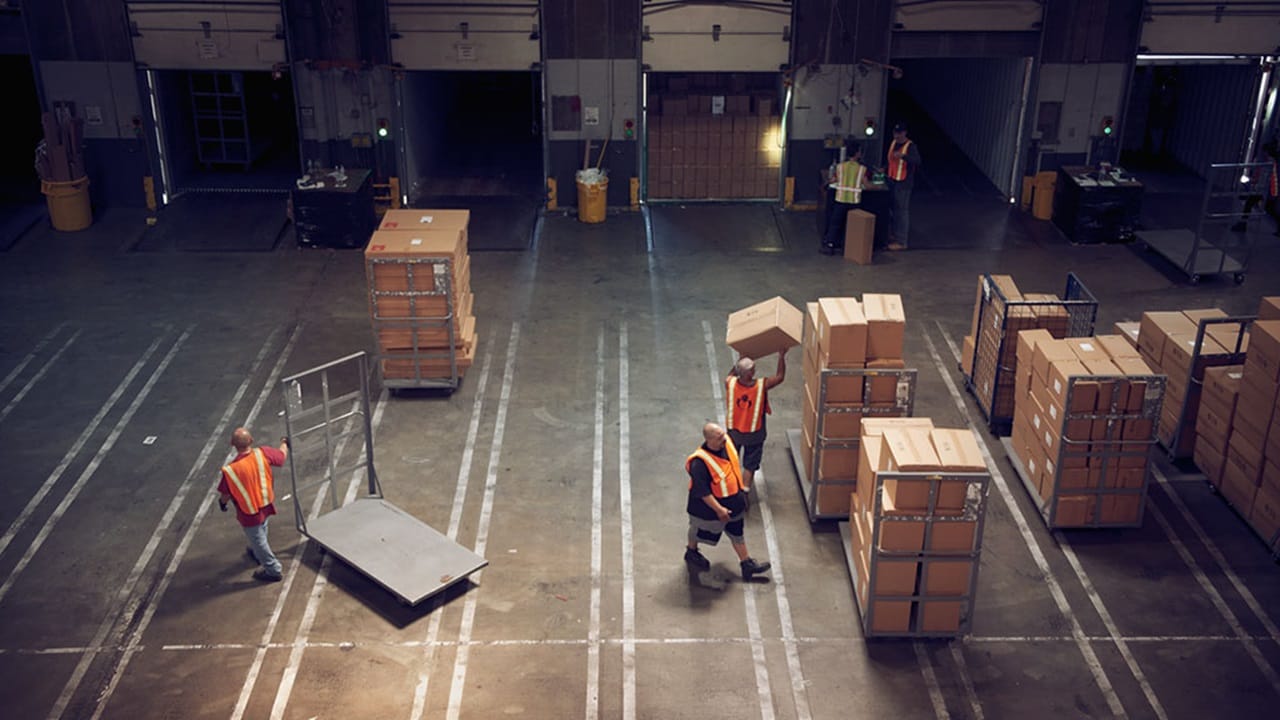The metaverse – and all the technologies it encompasses – has enormous potential to transform supply chain management.
The metaverse is the next evolution of the internet. It’s a fusing of the digital and physical worlds powered by technologies, including virtual reality (VR) and augmented reality (AR), blockchain, artificial intelligence (AI), and the internet of things (IoT) that connects smart devices. While it might seem intangible, its real-world potential for supply chain management is unmistakable.
The concept of the metaverse has been around since the 1990s. However, its growth has accelerated since the COVID-19 pandemic, which drove unprecedented demand for remote working tools. The global market is currently worth just over 100 billion USD. It is expected to grow by an average of 47% per year to reach more than 1,527 billion USD by 2029, according to Fortune Business Insights.
Already, brands are testing the metaverse’s potential to reach new audiences, improve brand awareness, and create new opportunities to sell products. In the United States alone, there were almost 5,000 trademark applications from businesses for metaverse and virtual goods or services between January and September 2022, compared to less than 2,000 for all of 2021. Puma, Nike, Gucci, Dolce & Gabbana, and Adidas are among the brands to have established presences in the metaverse, allowing consumers to view, try on and - in some cases – buy digital versions of their products.
While the metaverse is already being used for ecommerce and marketing, its potential for supply chain management and digitalisation is yet to be fully explored and harnessed. Many experts and industry professionals believe that with the right investment and platform development, the metaverse could be a game changer for supply chain optimisation. The 2022 Accenture Technology Vision study, for example, found 64% of supply chain management executives believe the metaverse will have a positive impact on their organisation. Whereas previously, supply chain management was based on historical data, the meta universe would offer real time and multisource data. The benefits would include:
- Improved visibility of all stages of the supply chain
- New capacity for accurate planning and problem-solving
- Unprecedented connectivity and new opportunities for collaboration
- New opportunities to measure and improve sustainability
Supply chain optimisation with metaverse solutions
The metaverse could help map the entire end to end supply chain network, which in turn offers better visibility of all stages of the supply chain. This can offer more accurate, real-time information on:
- Product lead times
- Logistics costs
- Delays and deliveries
In a virtual world, the movement of goods through the entire supply chain can be observed. Issues – like weather events, component shortages or transport disruptions – can be introduced to see how the supply chain responds and where it breaks down. These digital twins can help identify and trial improvements at various stages and, where problems emerge, this virtual world can be used to test solutions.
Metaverse solutions can also optimise peak load planning. In a virtual environment, you can test everything from order management to distribution and fulfilment, exposing where the supply chains need to be reinforced in times of increased demand. End to end supply chain network mapping helps create a more robust, resilient supply chain in the real world.
Where past data doesn’t exist or doesn’t apply, artificial intelligence can generate synthetic data, which can then be used to develop forecasts and map out the best course of action.
Metaverse solutions for facility design and location
The metaverse can also be used to design efficient and effective facilities. The first step is to create a virtual version of a manufacturing facility, a cargo ship, a warehouse, or distribution centre. In this simulated environment, all the processes and flows can be checked, including during peak loading periods or in times of disruptions.
Based on this testing, the best solutions can be incorporated into the design for the physical version. With a warehouse, for example, the flow can be tested. Space modelling can be used to optimise shelving. Facility locations and staff levels and placement can be studied - all without the need to construct anything in the physical world. The result is a better, efficient warehouse design.
The metaverse offers new ways to collaborate and share ideas. For example, suppliers can come together with businesses in this virtual space to observe and test the facilities. New ideas can be presented, and feedback shared, allowing for fast and effective collaboration.
Once these facilities are built, AI and IoT sensors could work together to track the movement of goods along the supply chain. Working with blockchain, they could one day plan, respond, and automatically implement the best responses in real time, with minimal human intervention. The foundations for this are already being laid. According to a 2021 Price Waterhouse Cooper survey, 52% of supply chain companies had accelerated their use of artificial intelligencebecause of the pandemic. In total, 22% had already implemented an AI advanced analytics platform and 38% had begun pilots.

Improve sustainability with metaverse supply chain
Most companies’ total carbon emissions are created by their supply chain. In fact, supply chains generate around 60% of all carbon emissions globally, according to Accenture. An EY report published earlier this year found 80% of supply chain executives are increasing their efforts to make supply chains more sustainable, but few had the visibility, technology, or programs in place to make and measure real progress.
The metaverse could allow for intelligent planning tools to offer greater insight into sustainability and Environmental, Social, and Governance (ESG) matters. The entire life cycle of a product can be mapped out and its environmental footprint calculated. It can then allow for tweaks along the way to be tested to reduce its footprint. The sustainability of facilities can also be tested and designed to be more efficient.
Conclusion – the future of supply chain management
Implementing the full suite of metaverse technologies will take time. In the next few years, the use of these technologies will continue to grow. New ideas and approaches will come into play. If the pace of growth continues, we will one day see supply chains that are more resilient and efficient than ever. Get ready for a whole new universe of supply chain optimisation potential with the metaverse.
未来,您想随时了解必读行业趋势吗?
您已经完成了,欢迎“登船”!
很抱歉,发送您的联系请求时出现问题。
请查看表单字段,确保所有已正确填写所有必填信息。如果问题仍然存在,请联系我们的支持团队以获得进一步的帮助。
未来,您想随时了解必读行业趋势吗?
使用此表格注册,即可直接在您的邮箱中接收我们的洞察见解,进入一个真正的综合物流世界。简单操作,即从我们为您量身定做的精选文章中获得启发,了解相关行业洞察信息。您可以随时取消订阅。













